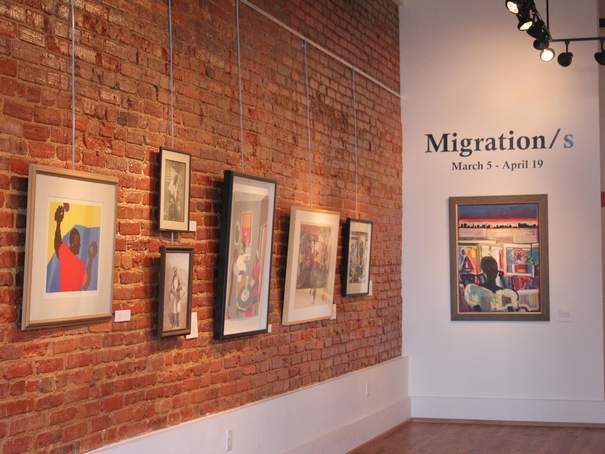
By Alexis Paine
Special to Tusk
The Paul R. Jones Gallery’s exhibit “Migration,” on display through April 19, showcases art that illustrates the effects of mass movements of people to different locations.
The exhibit features works from the permanent Paul R. Jones Collection of American Art. The collection is made up of 1700 pieces valued at $5 million, which were donated in 2008 by Paul R. Jones, an Alabama native and collector of African-American art.
A committee of University of Alabama faculty, made up of members of the Black Faculty and Staff Association, wanted to exhibit works that were relevant to a variety of different disciplines.
Lucy Curzon, the director of education and outreach for the collection, said the exhibit includes works that show geography, biology and other subjects related to arts and sciences and the university.
“We have prints, photographs, paintings — basically we’ve tried to cover a lot of the media areas included in the collection itself, so we’ve ended up having a wide variety,” Curzon said.
A portion of the works in the permanent collection reflect the “Great Migration,” the movement of African-Americans from the southern United States to northern regions in the 20th century, and will be displayed in the current exhibit.
“We have a reflection of what happens when a large group of people moves from one location to another,” Curzon said.
On display in “Migration” is a photograph titled “Harlem, 1935” showing that growing center of cultural production in the early parts of the 20th century because of the first great migration, Curzon said.
Also included in the exhibit is a work called “Looking for a Friend,” which Curzon said is a more abstract view of moving to a new area and trying to create relationships.
While the permanent collection is predominantly African-American works, the exhibit will also feature pieces that show the movement of Native Americans across the country, as well as the migration of other ethnicities.
“It’s migration locally, migration of ethnicities,” Curzon said. “It emphasizes integration and Mr. Jones’s wishes for the use of the collection.”
Curzon said Jones believed that art was precious, but that everyone should be able to view it. Jones wanted the collection to be open to the public and integrated into the university’s curriculum.
“He believed firmly that art could be used to start a conversation and bring people together,” Curzon said. “This exhibit is very much about understanding art to understand broader issues.”
The Paul R. Jones Gallery is open to the public on Mondays, Tuesdays, Wednesdays and Fridays from 10 a.m. to 6 p.m. and Thursdays from noon to 8 p.m.
